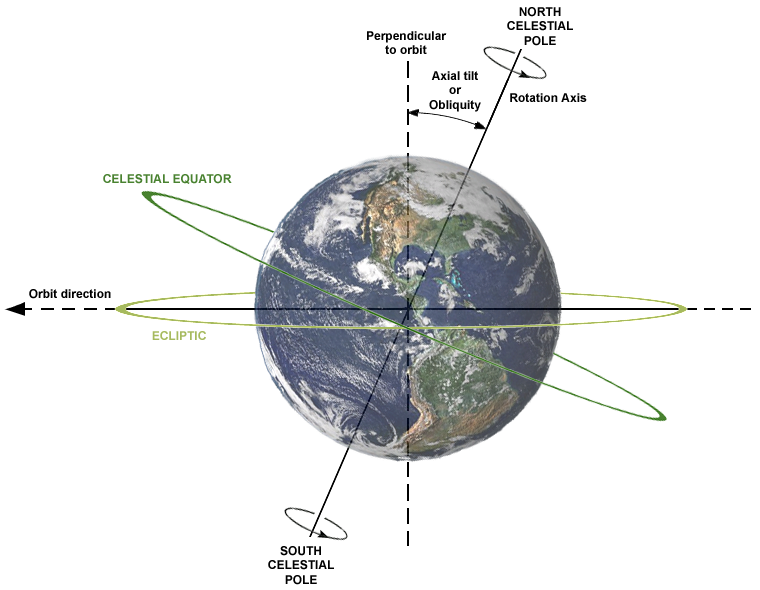
A new study has discovered that climate change is altering the way the Earth wobbles as it spins about its axis, causing the planet’s natural short-term polar drift to increase in speed by 1,600 percent over what it was in the 1980s—and even to cause the drift’s motion to change direction at the turn of the millennium.
Much like the spinning of a toy top, the rotation of the Earth’s axis is a complicated motion that incorporates smaller spins and wobbles that range from the long-term, 26 thousand-year axial precession used to define the major astrological ages, to shorter-term spirals with periods of only a few years; it’s these shorter-period oscillations that have been observed to be changing over the past few decades. Rather than simply being a solid, unvarying object spinning in space, the Earth is a dynamic system, with alterations in the location of mass across the planet’s surface, such as the distribution of water around the globe, able to change how the planet spins about its axis, in the same way a figure skater can change their spin by moving their arms closer to, or further from, their bodies.
This polar drift was first observed in the 1990s, but trying to determine the exact cause of the wobble was difficult due to the lack of direct satellite-measured data on how water was distributed around the globe. But the changes in distribution of the world’s oceans have since been mapped in detail by the Gravity Recovery and Climate Experiment (GRACE) satellites launched by NASA and the German Aerospace Center in 2002.
This mapping data has shown a change in how water is distributed around the globe, with the mass that typically forms ice at the poles shifting toward the equator as global warming melts the planet’s ice sheets. But to figure out what this distribution was like before the GRACE satellites started collecting data, researchers with the University of Chinese Academy of Sciences and the Technical University of Denmark modeled the two most likely water distribution scenarios to determine how fast the changes actually were.
The first scenario simply extrapolated global water distribution between 1981 and 2020 using the 2002-2020 GRACE data, but this model failed to match real-world observations. The second model, however, incorporated direct observations of ice melt made during the pre-2002 time period to the equation, producing an effect that better matched the polar drift that was being observed in the planet’s axis. The researchers also found that the pumping of groundwater for agricultural purposes was also contributing to the drift in Earth’s axis.
“Watching distribution of the hotpots of the change of the TWS [terrestrial water storage], they related to popular groundwater pumping regions,” explains study co-author Suxia Liu, a hydrologist at the Chinese Academy of Sciences. Even compared to the sheer mass of water displaced by the melting of polar ice sheets, this human-based draw on groundwater is quite substantial: in 2010, India alone pumped 92 trillion gallons (351 trillion liters) of water from underground reservoirs onto agricultural fields—that’s 351 billion tons of water; groundwater pumping in California and Texas also caused a major redistribution of water mass.
Thankfully, these changes in the Earth’s rotation have little impact on daily life, perhaps altering the length of a day by a millisecond or two over time, but the measurement of this anomaly can help science understand the factors that are altering our wobble. Unlike data on global water distribution, researchers have 176 years of polar drift observations to draw on, and can use this historical data to help fill in the blanks of where the planet’s water has resided since the mid-nineteenth century. “Our next step is to extend the relationship into operational forecasting with longer reconstructed data,” according to Liu.
Subscribers, to watch the subscriber version of the video, first log in then click on Dreamland Subscriber-Only Video Podcast link.
Today on LATEST NEWS, “Climate Change Linked to a Shift in How Earth Spins on Its Axis.” This reminded me of an interview on DREAMLAND with Trish and Rob MacGregor. They talked about their research in regards to the earth’s axis and how earth might have flipped over in the past, completely shifting the orientation of its poles.